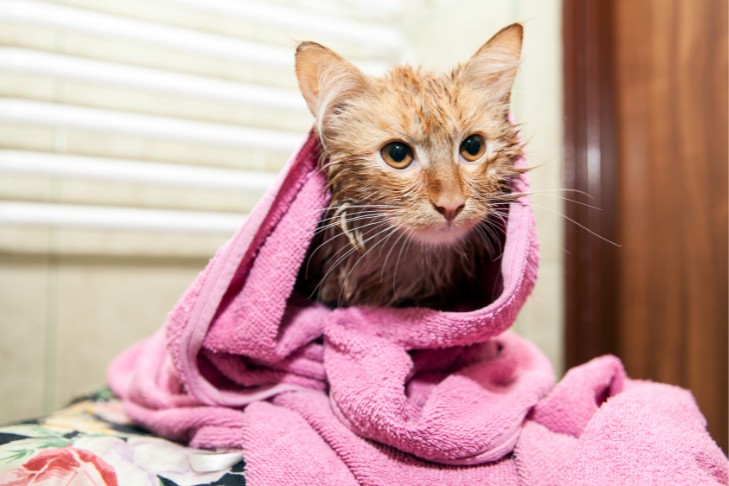Do Cats Need Baths?

As a cat owner, you may find yourself wondering if your feline friend needs a bath. Cats are renowned for their meticulous grooming habits, spending a significant part of their day licking and cleaning themselves. In most cases, cats are adept at keeping themselves clean, but there are circumstances where a bath might be necessary.
Self-Grooming
Cats are fastidious groomers, using their barbed tongues to remove loose fur, dirt, and parasites. This self-grooming behavior is usually sufficient to keep their coat clean and healthy. However, certain factors may disrupt their grooming routine:
Health Conditions:
Some health conditions can affect a cat’s ability to groom itself effectively. Obesity, joint and dental issues, or skin problems may limit their flexibility and reach. In such cases, a gentle bath can assist in maintaining their hygiene.
Long-Haired Breeds:
Long-haired cat breeds, such as Persians or Maine Coons, may require more assistance with grooming due to their dense fur. Mats and tangles can form, making regular brushing and occasional baths necessary to prevent discomfort and skin issues.
Outdoor Adventures:
If your cat is an outdoor explorer, they might get into messes that their grooming routine can’t handle. Rolling in something unpleasant, encountering sticky substances, or getting caught in the rain may warrant a bath.
Allergies and Sensitivities:
Cats with allergies or sensitivities to certain substances may benefit from a bath to remove potential irritants from their fur.

Tips for Bathing Your Cat:
1. Choose the Right Products
Use cat-friendly shampoos that are mild, hypoallergenic, and free from harsh chemicals. Avoid using human shampoos, as they may contain ingredients harmful to cats. For sensitive skin that might not require a full bath, consider Pet Releaf’s Skin & Paw Releaf topical.
2. Prepare in Advance
Before bringing your cat into the bathing area, set up everything you need. Have towels, shampoo, and a gentle approach to make the experience as stress-free as possible.
3. Positive Reinforcement
Make the bath a positive experience by offering rewards, gentle praise, and reassurance. Gradually introduce your cat to water, allowing them to get used to the sensation.
4. Use Proper Technique
When bathing, support your cat’s body and keep their head above water. Gently massage the shampoo into their fur, avoiding the eyes, nose, and ears. Rinse thoroughly to remove all traces of shampoo.
5. Dry Thoroughly
After the bath, pat your cat dry with a towel. If your cat tolerates it, you can use a hairdryer on the lowest setting. Ensure they are fully dry to prevent chilling.
While most cats are proficient groomers, there are instances where a bath becomes necessary for their well-being. Understanding your cat’s individual needs and preferences will help you make the right decision when it comes to maintaining their hygiene. Always consult your veterinarian or local groomer for advice tailored to your cat’s specific health and grooming requirements.


